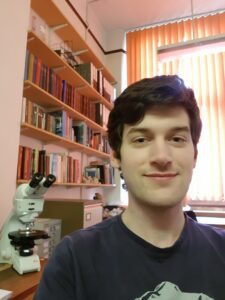
The Genesis of Lithium-rich Granites and Pegmatites
Bence Horányi (doctorant at ISTO, Orléans) will present his current research at the Magma seminar.
Room E001
Abstract
Rare-metal granites and pegmatites (RMGPs) are characterised by their enrichment in incompatible elements such as Li, Cs, Ta, Sn, W, Nb, and Rb. RMGPs account for approximately half of the world’s Li production [1]; therefore, it is imperative to understand their genesis and evolution through the crust in order to improve exploration prospects for rare-metal deposits. The genesis of RMGPs is often associated with the protracted fractional crystallization of peraluminous melts; however, this mechanism fails to explain the strong enrichment of Li observed in RMGPs (up to 10,000 ppm Li). Alternatively, rare-metal enrichment during the partial melting of metasediments has been postulated to be a mechanism of RMGP genesis; however, there is a lack of experimental data to support this. In order to test this hypothesis, melting experiments were performed on Li-rich metasediments in a piston-cylinder apparatus (at 750-800oC and 700 MPa) to explore the compositions of the partial melts. The experiments produced peraluminous granitic melts with strong Li-enrichment (up to 2200 ppm), which is consistent with RMGPs. However, in order to produce economically viable deposits (>5000 ppm Li), the partial melt must undergo further fractional crystallization. In order to interpret Li-enrichment during fractionation, crystallization experiments were performed on peraluminous rhyolitic samples in an internally-heated pressure vessel (at 600-675oC and 300 MPa). Mineral-melt partition coefficients of rare-metals were acquired for quartz, plagioclase, k-feldspar, biotite, and muscovite. Modal mineral proportions and bulk partition coefficients (DLi of 0.26) were used to constrain the enrichment of Li by fractional crystallization. Fractionation of the experimental partial melts by 65% and 85% produces RMGPs with Li contents of 5000 ppm and 9000 ppm, respectively.
[1] Benson et al. (2017) Nature Communications 8:270


